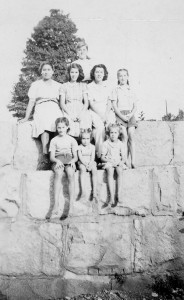
My previous article told the story of the building of the Brook Road in 1824, which ran from the Franklin/Andover town line to Dyer’s Crossing. For over 20 years, this new road served its purpose well. On December 28, 1846 the Northern Railroad arrived in Franklin as it continued its push north-westward. It reached Andover in July of 1847, and just four months later, on November 17, 1847, the first regular train made its way from Concord to Lebanon.
Unlike the Brook Road, the railroad tracks could not twist and turn and squeeze through the valley as it followed the brook. Instead, it was necessary for the rails to follow a relatively straight path on its east to west journey. Three things created rather significant problems for the railroad – the brook, the Brook Road, and the two hills on either side of them.
Because of the brook’s twisting and turning in this area, and the railway’s need to follow a somewhat straighter course, three bridges had to be built across the brook for the railroad bed. All of these bridges were within a short distance of our house and just beyond today’s S-shaped highway bridge. John Brown, a talented stone cutter and contractor from Franklin, and “Boston John” Clark built the stone abutments for these bridges and others along the line.
The railroad’s second problem was its need to cut across the Brook Road twice in an even shorter distance than above, and then again at Dyer’s Crossing. Thus the slow-moving road travelers, who might be walking, on horseback, or in a horse or ox-drawn wagon, had to be on constant alert for approaching trains as they came barreling around the corner toward these crossings.
The third challenge encountered by the railroad was its need for a wider space in order to pass between Marston Hill and Hogback Hill. To accomplish this feat, it was necessary for the railroad building crews to remove huge amounts of earth from both of these hills. According to Ralph Chaffee, these workers were Irish immigrant laborers, with steam shovels and cranes.
When the various cuts were made, this excavated material was used as fill in low-lying areas as the men worked to keep the proper grade for the rail bed. Supposedly, a group of men with a one-horse dump cart took 5,000 cartloads of dirt from Hogback to fill in the hollow between the town line and the underpass at the former Keniston farm. (If one stands on the rail trail in this area today, it is easy to see this probably was not an exaggeration! I would even guess 50,000 cartloads or more!)
Granite blocks, carved from nearby ledges, were used to shore up the steep embankments and are still in place today. In other locations, logs were used for retaining walls, but eventually they were replaced with the reinforced concrete bars that are still present today.
It did not take long after the completion of the Northern Railroad for everyone to realize the dangers the frequently-passing trains presented to road travelers. In 1849, Henry Emery, a resident of today’s Hoyt Road, was killed by a locomotive at Dyer’s Crossing. In 1897, James Sullivan of Beech Hill was killed at one of the crossings near our present house. Frank Tucker of Tucker Mountain was killed by a train at Dyer’s Crossing in 1903. These three deaths were noted in John Eastman’s and Ralph Chaffee’s books, and most likely there were other similar incidents which went unrecorded.
Voters at Andover’s 1903 town meeting passed a resolution asking the Boston & Maine Railroad – which had acquired the Northern Railroad in 1887 – to provide gates or flag men at these dangerous crossings. The B&M Railroad had a different idea. Its plan was to move the section of the road between our house and Hogback, so as to eliminate two of the most dangerous crossings.
Our old deeds show that in June of 1903, Joseph Cullen – the owner at that time – sold a small portion of his western land to the B&M Railroad. At some point, his neighbor Edgar Taylor sold a small part of his Hogback land to the B&M Railroad as well.
These two parcels of land, when joined together, would become the new path for the Brook Road. This road still passed in front of Archie’s Store and Gas Station, but instead of turning south, it now continued straight west towards the brook (across our present field by the big pine tree). It then crossed the brook on a new bridge and eventually rejoined the original Brook Road just beyond the Clay Bank. This new section of road, while much higher in elevation than the original road, was considerably lower than the highway of today. Thankfully, it was now much higher than, and farther away from, the troublesome railroad tracks.
A large amount of excavation was necessary on the western side of the new bridge in order for the road to make its way around Hogback. This would create new problems for the road travelers and would eventually lead to the building of the Brook Road’s third path!